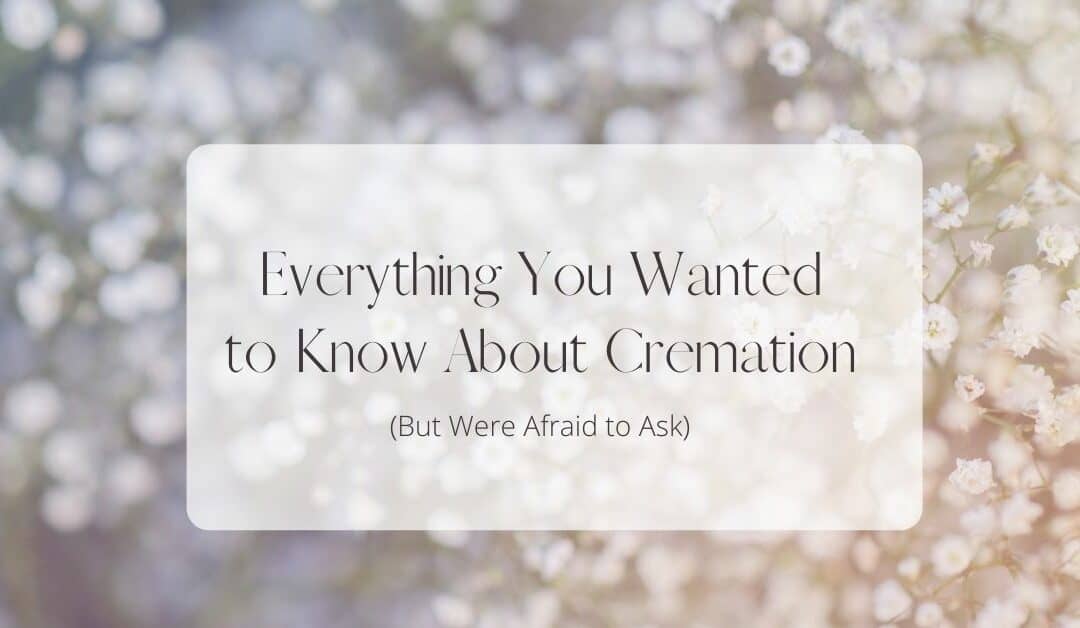Cremation is an increasingly popular option for those looking to dispose of a body. But how does cremation work, and what can you expect after the process is complete? Let’s look at everything you need to know about cremation, from how long it takes to what’s left of the body after the process finishes. We’ll also dispel some common myths about cremation and answer some frequently asked questions. So if you’re curious about cremation, read on!
What is Cremation?
Cremation is the process of reducing a body to its bone fragments through the use of heat. Its popularity has grown exponentially as a means of disposition of the body after death.
“While in 1958, less than 4 percent of Americans were cremated, the Cremation Association of North America estimates that over 50 percent will be cremated by 2018. This substantial increase in popularity is due to significant changes in the religious expectations, geography, beliefs and families of many Americans.” (1)
How Long Does Cremation Take?
Cremation takes between two and three hours at an average operating temperature of 1000 to 2000 degrees Fahrenheit. The typical time it takes to cremate a body is one to three hours, although it can take up to five hours in extreme cases. A 150-pound human body in a cardboard container takes about two hours on average.
What’s Left of the Body After Cremation?
After the cremation process is complete, you receive three to seven pounds of remains that look white and feel soft like ashes. What’s returned to you is the person’s skeleton. Once you burn off all the water, soft tissues, and cremation container/casket, etc., all that’s left is bone. The bone is ground up and given to you as “ashes.”
What Are Cremains?
The cremation provider gives you the ground-up bone fragments in an urn or container. Many cemeteries and funeral homes call the resulting product of cremation “cremains.”
Can You Bury Cremains?
You can bury or scatter cremains in a cemetery or other location, but always ask first before you scatter remains.
Even older cemeteries that may look full often allow for cremains burials in the areas between the more extensive burial vaults. These cremains burial plots cost less and take up much less room in the cemetery than traditional burial plots.
You can also choose to inter the cremains in a mausoleum niche or urn at a cemetery.
Can You Make Beauty From Ashes?
There are many different types of jewelry that you can make from cremains. Some individuals choose to purchase a cremation pendant, a locket-style necklace that contains the ashes of a loved one. However, you can also order jewelry made from the actual cremains. One such choice is a diamond made from the ashes of your loved one.
Some companies will take the cremains and create a custom piece of diamond jewelry for you. No matter what type of jewelry you choose, it can always be a beautiful and meaningful way to keep your loved one close to you.
What Else Can I Do with the Ashes?
In S. Korea, it is common to have beads made from cremains and store these colorful beads in a glass jar to remember the deceased.
Cremation urns are another option for those who want to keep the cremated remains of their loved ones at home. Urns come in many different styles, sizes, and materials. You can choose an urn that reflects the personality of your loved one or select one that is more understated.
If you decide to scatter the ashes of your loved one, there are many ways to do so. When scattering ashes, it’s essential to check with local authorities first to ensure you are not breaking any laws.
As you can see, there are many different options available to those who have had someone close to them cremated. Whether you choose to bury the remains, keep them at home, or make something special out of them, know that there is no right or wrong answer – do whatever feels right for you and your family.
How Much Does Cremation Cost?
The actual cremation service typically costs between $900 and $4,000, depending on the company you choose and the services you add on. The price also varies depending on whether you want only a direct cremation or also would like to plan a traditional funeral service.
A direct cremation occurs when the body is taken straight to the crematorium without a funeral service beforehand. This is the most basic and cheap option for cremation. However, you can get the best of both worlds by choosing a direct crematory inside a funeral home. A funeral home that offers direct cremation services may cost less and provide more personal involvement.
A traditional funeral service with cremation means that there will be a viewing or visitation before the funeral, followed by a ceremony, and then the body will be cremated.
Do All Religions Allow Cremation?
Cremation was once taboo in many religions, but that is no longer the case. Now, most major religions allow for cremation, with some even encouraging it. Some of the major religions believe as follows:
The Catholic Church lifted its ban on cremation in 1963. The majority of Christian faith denominations are okay with cremation. Some Christian sects still believe burial is better because it does not purposely destroy the body.
Buddhist beliefs about cremation are that the process frees the soul from the body so that it can be reborn. Hindus believe that cremation helps the soul release from the body and begin its journey to the next life.
Islamic culture believes that “…burying the dead in the ground is the correct way to respect dead bodies. Cremation is prohibited under Islamic law because, unlike in some cultures, it is considered a violation of the dignity of the human body.” (1)
Common Myths About Cremation
There are a lot of misconceptions about cremation. Some people believe that cremation completely destroys the body, but that’s not the case. Others think you need to have a particular type of casket for cremation, but any kind of casket or container that safely burns will do.
Rumors abound that crematories cremate more than one body at the same time. However, multiple body cremation is illegal in the United States.
Still, one of the reasons to choose a direct cremation provider is so that you can see your loved one’s body as it goes into the retort for yourself. Being part of the process assures you receive your loved one’s cremains.
I’m Ready to Choose Cremation; What Do I Do Now?
If you have decided that cremation is right for you or your loved one, the next step is to contact a direct crematory provider within a funeral home. They will be able to walk you through the process and answer any other questions you may have.
We Can Help
At Renaissance Funeral Home and Crematory, we meet your needs for cremation in addition to any other services you may need. Our basic cremation services include more than a direct crematory can. We encourage families to participate when they choose to do so. In addition, we can help you plan a funeral or memorial and handle all of the paperwork that occurs when there is a death in the family. We want to meet your needs during this difficult time so that you can grieve your loss with your family.
We hope this blog post has answered some of your questions about cremation. If you have any more questions or want to learn more about our cremation services, please don’t hesitate to contact us. We’re here to help!


